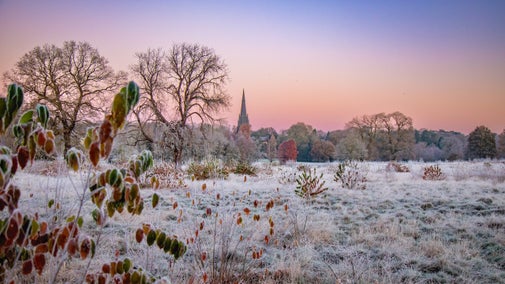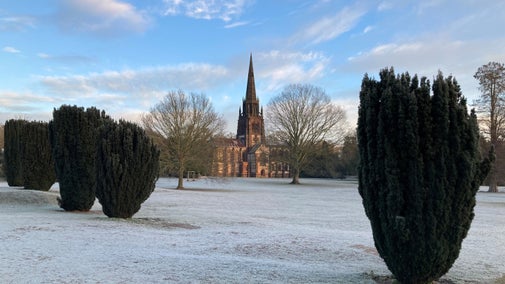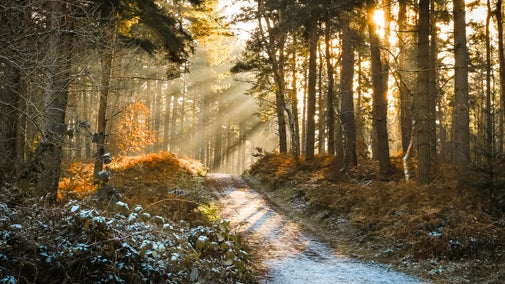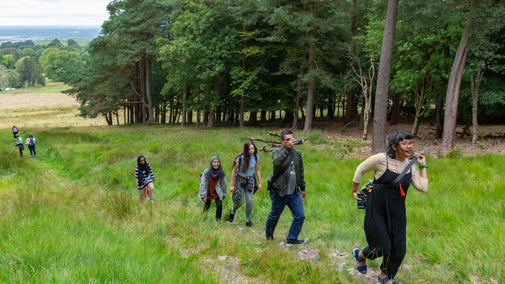The bluebell woods of Clumber
Nottinghamshire & Lincolnshire
Starting in Hardwick village, this circular route takes you through several woodland areas carpeted with bluebells during the spring. You'll also pass historic buildings of the former ducal estate, cross heathland and farmland and walk alongside Clumber Lake.
Near to
Clumber ParkStart point
Hardwick village main car park, grid ref: SK637755Trail information
More near here
A glimpse of southern Clumber
Stroll through woodland and agricultural land in some of the quieter parts of Clumber, then finish by the lakeside on a walk that's perfect for all seasons.

Clumber Park history walk
Discover glimpses of Clumber Park's history on this short, circular walk in the park, ideal for families, pushchairs and wheelchairs.

North West Clumber walk: a tale of two bridges
Get off the beaten track on this scenic 7.5-mile walk through lesser-known parts of Clumber Park, taking in views of two bridges.

The Second World War walk at Clumber Park
This scenic circular walk explores the sites of Second World War activities, plus evidence of significant earthworks, throughout Clumber Park.

Get in touch
Our partners

We’ve partnered with Cotswold Outdoor to help everyone make the most of their time outdoors in the places we care for.
You might also be interested in
Getting active at Clumber Park
From lakeside runs to woodland rides, Clumber Park has 20 miles of trails for cyclists, runners and walkers to explore. Bridlepaths through the estate provide an opportunity to explore on horseback.

Visiting Clumber Park
With 3,800 acres of parkland to explore, there's so much to see and do at Clumber Park this autumn.

Visiting Clumber Park with your dog
Clumber Park is a three pawprint rated place. Exploring the 3,800 acres of beautiful parkland with your dog by your side is one of the best ways to see Clumber Park.

Cotswold Outdoor: our exclusive walking partner
Learn about the National Trust’s ongoing partnership with Cotswold Outdoor. Find out how they help us care for precious places and the exclusive discount available for National Trust supporters.

Staying safe at National Trust places
The special places in National Trust care sometimes come with a few risks for visitors, be it coastline or countryside. Find out how to keep safe throughout your visits.

Follow the Countryside Code
Help to look after National Trust places by observing a few simple guidelines during your visit and following the Countryside Code.

Walking in Nottinghamshire and Lincolnshire
From the parkland, woods and lakeside views of Clumber Park to the ancient woodland around Belton House, discover where to go for the best walks in Nottinghamshire and Lincolnshire.

Walking
Explore some of the finest landscapes in our care on coastal paths, accessible trails, woodland walks and everything in between. Find the best places to walk near you.


